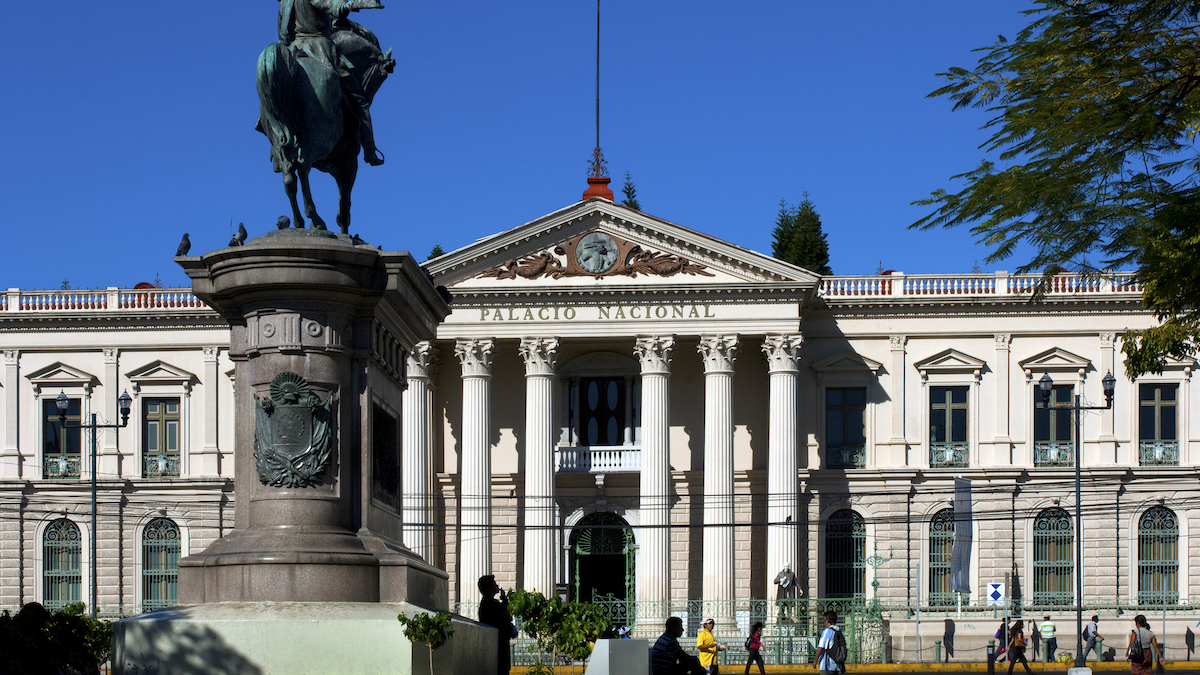Apollo’s Moonshots: Algorand seeing signs of mainstream adoption

El Salvador is using Algorand's platform for its digital wallet. (Getty Images)
David Angliss, an analyst with Australia’s leading cryptocurrency investment firm, Apollo Capital, shares the fund’s weekly take on what’s happening in the fast-changing and volatile cryptocurrency space.
For all the hype about crypto, many platforms are still in the proof-of-concept phase.
“A lot of the blockchain projects in the space, they don’t have real-world use cases,” David Angliss acknowledges.
“They’ve got their mainnet running. However, we’ve yet to see them adopted in the mainstream.”
For example, Angliss points to the Chinese smart contract platform Neo and “blockchain-powered internet” project Elastos as two projects that have “fantastic” ideas but “still trying to get that adoption and be used in everyday life.”
But Apollo Capital is carefully watching layer 1 blockchain project Algorand, which seems to be finding real-world use cases.
Leading Latin American crypto firm Koibanax earlier this month chose Algorand as a platform on which to develop El Salvador’s digital wallet.
The Algorand platform is also being used to tokenise the Brixton Pound, a local currency that circulates in the Brixton area of London, as well as the Marshall Islands’ upcoming digital Marshallese sovereign.
Are governments going to build fiat coins on top of Ethereum, a cryptocurrency made by cipher punks, or #Algorand, a coin created by a trusted & credentialed team at MIT that’s already planned on being used by the Marshall Islands?
— Alexander Trefonas $ALGO (@a3voices) March 24, 2021
“It seems Algorand is one of the first blockstreams to be taken on by the mainstream,” Angliss says.
“It’s pure proof of stake protocol, aiming to be the base layer for the global financial industry.”
There’s a big push on among governments to see which can be the first to implement a Central Bank Digital Currency, Angliss notes, something Algorand devotes a whole section to on its website.
“It’s very stablecoin-friendly in its design,” Angliss says of Algorand.
“This is probably a real litmus test for governments, adopting blockchain on a grand scale.”
The Algorand Foundation also announced last week that new community governance features for the platform would be coming on October 1, including inflationary rewards for users.
.@AlgoFoundation governance rewards: 12% – 30%.
“…a Governor could expect to claim a total annualized reward rate between 12% and 30% in that first period.”
Bulk up for the first period to earn the @algorand rewards rate of 5.6% + governance rate of 6% – 24%!$algo #Algorand
— snymed (@SnyMed) September 9, 2021
The platform also announced a new tool that would let users tokenise any asset in seconds.
“There’s always that narrative of blockchains coming after Ethereum as well, this is a classic example of a competitor to Ethereum just growing, projects getting launched on it, and starting to really generate momentum,” Angliss says.
The No. 38 crypto when Stockhead profiled it in July, Algorand on Friday was the No. 17 coin with a market cap of US$10 billion.
“We’re watching it very closely. And we’re pretty excited to see the events in El Salvador play out and Bitcoin’s resilience with the rollout,” Angliss says.
BTC dipped hard the day of the El Salvador’s rollout, but appears to have stabilised, Angliss told Stockhead on Friday.
dYdX airdrop
One of the areas that Apollo Capital is most bullish on is on-chain derivatives – decentralised platforms for leveraged trading.
dYdX, one such popular platform, airdropped tokens to over 30,000 users in August that unlocked last week for a windfall worth as much as US$100,000 for heavy users.
“dYdX is definitely one of the most popular projects applications on Etherscan right now,” Angliss said.
Aside from stablecoins, dYdX was the most popular token on Ethereum on Friday, Angliss said.
The airdrop was an “incredible” windfall for users, and some even managed to claim multiple bonuses by using different accounts, Anglis said.
Apollo didn’t get the airdrop as it doesn’t engage in leveraged trading, but it is looking at buying into the project.
“We just need some time for the volatility to stabilise and then we will be keen to look at potential entries,” Anglis said.
Related Topics
UNLOCK INSIGHTS
Discover the untold stories of emerging ASX stocks.
Daily news and expert analysis, it's free to subscribe.
By proceeding, you confirm you understand that we handle personal information in accordance with our Privacy Policy.








